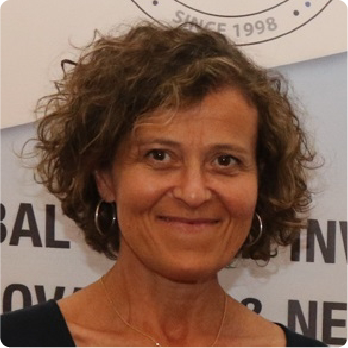4th
Spring Pharmaceutical Synchrotron X-Ray Powder Diffraction Workshop
10th - 11th June 2024
NOVARTIS Campus, FAB6 conference room | Fabrikstrasse 2, 4056 Basel - Switzerland
Alongside the traditional subjects such as synchrotron X-Ray Powder Diffraction advancements and Pair Distribution Function, as well as complementary techniques for pharmaceutical characterization, the 2024 SPS-XRPD Workshop presents an intriguing addition: the exploration of co-processed Active Pharmaceutical Ingredients (APIs).
But what exactly do co-processed APIs entail, and how are they regulated within the pharmaceutical industry? Join us as we delve into their characterization and regulatory considerations.
VENUE
The SPS-XRPD-4 workshop will be held in Switzerland, at the Saint Johann Campus, better known as the NOVARTIS Campus, in the comfortable FAB6 conference room at the Fabrikstrasse 2 in Basel.
The Novartis Campus hosting our SPS-XRPD Workshop for the first time, is the global headquarters of Novartis and serves around 8000 employees. It is a modern center for research, development and management, where work takes place across divisions and teams.
TRAVEL INFORMATION
BY WALK:
|
BY PUBLIC TRANSPORT:
|
BY CAR:
|
ACCOMODATION
Accommodation is not included in the registration fees and participants need to take care of booking a room on their own.
For those who reserved a room at the nearby Hotel ibis Mulhouse Bâle Aéroport (F), located at 17 Avenue du Général de Gaulle, 68300 SAINT LOUIS, FRANCE (Phone: +33 3 89 69 06 58; Email: h5612@accor.com), below helpful directions:
Starting at the Hotel ibis Mulhouse Bâle Aéroport (F), you can conveniently reach the Novartis Campus in about 15 minutes with a combination of BUS 604 and a short 5-6 minute walk. Begin by catching BUS 601 at the Croisée des Lys bus stop, which is just a 3-minute walk from the Ibis Hotel. Then, disembark at the Voltaplatz bus stop, which is only a 5-minute walk away from the Novartis Campus.
DAY 1 - 10TH JUNE 2024
| 8:00 am – 8:45 am | Get together breakfast |
| 8:45 am – 9:00 am 9:00 am – 9:15 am |
Welcome Address: SPS-XRPD-4 -Despina Solomonidou, Head of Novartis Technical R&D Organizers' Opening Remarks: SPS-XRPD-4 - Fabia Gozzo & Arnaud Grandeury |
| 9:30 am -11:00 am | Co-processed APIs - Plenary lectures - Chair: Thibaud Stoll Unlocking the Future: Innovations and Impact of Co-Processed Active Pharmaceutical Ingredients in Pharmaceutical Science and Industry –Luke Schenck, Merck & Co., In., New Jersey, USA Co-processed API: Regulatory aspects - Cinzia Gazziola, F. Hoffmann-La Roche (Roche), Basel, Switzerland |
| 11:00 am – 11:30 am | Further questions to speakers |
| 11:30 am – 1:00 pm | Networking lunch |
| 1:00 pm – 3:30 pm | Round Table Discussion: Towards the harmonization of Co-processed API definition - Moderator: Arnaud Grandeury - PARTICIPANTS: Cinzia Gazziola, Luke Schenck & Steve Byrn - 1hr
|
| 3:30 pm – 4:00 pm | Coffee break |
| 4:00 pm – 5:30 pm | Role of polymorphism in Intellectual property rights - Chair: Steve Byrn -
|
| 5:30pm -6:30 pm | Further questions to speakers - Comments from the audience |
| From 7:00 pm | Welcome dinner & Networking |
DAY 2 - 11TH JUNE 2024
| 8:00 am - 8:30 am |
Get together breakfast |
| 8:30 am – 10:30 am | Advancements in Pharmaceutical Analysis through Synchrotron-based Analytical Techniques and Theoretical Predictions - PART I - Chair: Remo Widmer
|
| 10:30 am – 11:00 am | Coffee break |
| 11:00 am – 13:00 am | Advancements in Pharmaceutical Analysis through Synchrotron-based Analytical Techniques and Theoretical Predictions - PART II - Chair: Pamela Whitfield
|
| 1:00 pm – 2:00 pm | Lunch |
| 2:00 pm – 3:30 pm | Pair Distribution Function– Part 1/2 - Chair: Rohan Pokratath
|
| 3:30 pm – 4:00 pm | Coffee break |
| 4:00 pm – 5:30 pm | Pair Distribution Function modelling – Part 2/2 - Chair: Pam Smith
|
| 5:30 pm - 6:30 pm | Round table on role of polymorphism, S-XRPD and PDF- PDF guidelines, an update CONCLUSIONS |
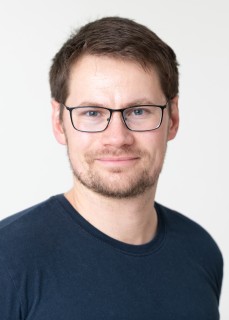
Beamlines P02.1/P25, PETRA III, Deutsches Elektronen-Synchrotron (DESY), Hamburg, Germany
martin.aaskov.karlsen@desy.de
Martin Aaskov Karlsen got his PhD from the University of Southern Denmark, where he has studied disorder in battery electrodes. For this, he used synchrotron-based powder x-ray diffraction (PXRD) methods with Rietveld analysis as well as the X-ray total scattering (XTS) method for atomic pair distribution function (PDF) analysis. Therefore, he has conducted several beamtimes at different synchrotron beamlines. During his PhD time, he was awarded more grants, including a Fulbright Grant, which allowed him to spend two semesters as an exchange student at Columbia University in New York City in the group of Prof. Simon J. L. Billinge, who is a world-leading expert in the field of PDF analysis and PDF method development. After his PhD, he was a postdoctoral researcher at Aarhus University, Denmark, before he joined the Powder Diffraction and Total Scattering Beamline P02.1 at the PETRA III synchrotron at the Deutsches Elektronen-Synchrotron (DESY) as a postdoctoral researcher/beamline scientist. By joining beamline P02.1, he will be also part of the team, which will support the Applied Biomedical Imaging, Powder Diffraction and Innovation Beamline P25, which is currently under construction.
Industrial relevant Powder Diffraction and Total Scattering / PDF capabilities at beamlines P02.1 / P25 at PETRA III
The Powder Diffraction and Total Scattering Beamline P02.1 and the Applied Biomedical Imaging, Powder Diffraction and Innovation Beamline P25 at the PETRA III synchrotron at the Deutsches Elektronen-Synchrotron (DESY), offer state-of-the-art powder X-ray diffraction (PXRD) and atomic pair distribution function (PDF) capabilities for academic as well as industrial users. The P02.1 beamline is dedicated to polycrystalline and amorphous samples. Long-range order is probed through PXRD. When long-range order is absent or when local deviations away from the long-range structure are of interest, the short-range order of samples is probed through X-ray total scattering (XTS) for PDF analysis. The P02.1 beamline is equipped with area detectors that allow for fast acquisition of high-quality data, enabling high-throughput of PXRD and PDF data. The versatility of the beamline is highly reflected by its diverse offer of sample environments, including but not limited to cooling, heating, milling, pressurizing, mechanical stressing, and electrochemical probing. An automatic sample exchange robot allows for automation of measurements for a series of up to 300 capillaries. The P25 beamline is currently under construction. The beamline will offer high-resolution PXRD capabilities as well as fast-acquisition PXRD capabilities, just as it will be equipped with an automatic sample exchange robot, which will make the P25 beamline suitable for high-throughput PXRD experiments, also offering cooling and heating from blower devices. In summary, the industrial relevant PXRD and PDF beamlines P02.1 and P25 are highly suitable for high-throughput ex situ experiments as well as in situ and operando experiments under various conditions.
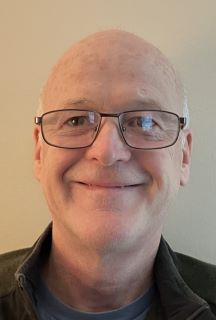
Argonne National Laboratory
benmore@anl.gov
Chris Benmore is a senior physicist at the Advanced Photon Source, USA. He has worked at Argonne National Laboratory since 2000 in the area of x-ray and neutron diffraction applied to disordered materials. He was educated in England, receiving his PhD from the University of East Anglia in 1993 and was a postdoctoral fellow in Canada, which included a visiting appointment at Los Alamos Neutron Scattering Center. Chris has held permanent staff positions at the Rutherford Appleton Laboratory, UK, and the Intense Pulsed Neutron Source at Argonne. Chris has been an adjunct professor at Arizona State University since 2008 and holds a joint appointment with the University of Chicago. He has published ~300 papers and presented over 130 invited talks. Chris?s research interests include x-ray and neutron diffraction methods applied to liquids, glasses and amorphous materials. Chris was awarded the University of Chicago medal for research in 2012. He is currently member of the Argonne Center for Steel Electrification by Electrosynthesis.
Molecular arrangements in biological liquids and amorphous pharmaceuticals
Synchrotron x-ray diffraction experiments represent a powerful tool for investigating the structure of molecular liquids, glasses and amorphous materials, through the extraction of the Pair Distribution Function (PDF). The x-ray PDF gives an average structure of the entire system that is heavily weighted towards the heavier atoms. Reverse Monte Carlo modeling methods, such as Empirical Potential Structure Refinement (EPSR) can provide realistic 3-dimensional molecular models that are consistent with high-quality x-ray data, provided reasonable chemical constraints are imposed. A brief overview of the methodology is presented together with a diverse range of examples in both biology and pharmaceutical science. These include investigations include (i) the cryopreservation ability of Alaskan beetle larvae through dehydration mechanisms, (ii) changes in the sparse hydrogen bonding arrangements in stable liquid and supercooled liquid Cannabidiol (CBD), and (iii) the stability of Ketoprofen-polyvinylpyrrolidone (PVP) amorphous solid dispersions. In summary, we show the use of accurate liquid and amorphous x-ray data, combined with information from NMR and molecular modeling methods, can yield deep insights into the structural arrangements that are directly linked to properties and function.
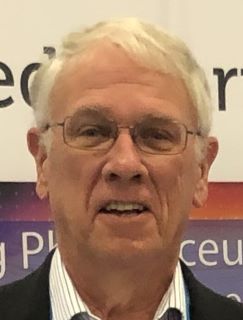
Improved Pharma
sbyrn20@gmail.com
Dr. Stephen R. Byrn is Charles B. Jordan Professor of Medicinal Chemistry in the Department of Industrial and Physical Pharmacy, Purdue University. Dr. Byrn has been in the College of Pharmacy at Purdue for over 50 years. He has had over 50 Ph. D. and postdoctoral students in his laboratory. He received his Ph. D. in Chemistry from the University of Illinois, Urbana and did postdoctoral work at UCLA. Dr. Byrn has over 220 publications and has received several awards for his research. Dr. Byrn is cofounder of the Purdue graduate program in Biotechnology Innovation and Regulatory Science in Arusha, Tanzania. Dr. Byrn also founded several companies and academic programs. In September 2010, the Journal of Pharmaceutical Sciences dedicated a special issue to Dr. Byrn based on his contributions to the field of solid state pharmaceutics.
Polymorphism of Pharmaceuticals
The utilization of Synchrotron powder diffraction, alongside an understanding of polymorphism can significantly accelerate the development of pharmaceuticals. Initial studies of the candidate substance employing X-ray analysis and non-diffraction analysis furnish critical information on polymorphism and the solid-state chemistry of candidates under development. In some cases, the candidate can be developed with the most stable polymorph found in these initial studies. If not, this information facilitates the design of co-processing systems aimed at expedited development. This co-processing approach entails the discovery of co-processing agents that allow fast development of a composition that can be administered to patients and animals for toxicological testing. Often, this strategy is aimed at the preparation of co-processed pharmaceuticals with enhanced solubility. This method ensures that drug development does not stall due to solubility issues, allowing for seamless progression to animal studies. During the animal studies, further work on co-processed systems, including Synchrotron-based studies and stability analyses will be conducted to ascertain the most suitable composition for ongoing development. This optimal composition will then be advanced to the final development stages, preparing for Investigational New Drug (IND) applications or entering Phase II trials. This integrated approach promises a more efficient pathway through the complexities of drug development, leveraging Synchrotron diffraction, polymorphism, solid-state chemistry, and processing innovations to streamline early-stage studies and enhance the solubility and bioavailability of pharmaceutical compounds.
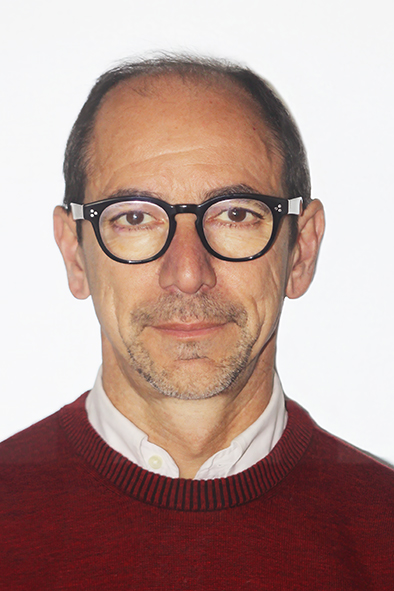
CNR - Institute of Crystallography
rocco.caliandro@cnr.it
Dr Rocco Caliandro got the degree and PhD in Physics at the University of Bari (Italy). During his PhD and a two years post-doctoral fellowship from the National Institute of Nuclear Physics (INFN) he carried out researches in high-energy physics, participating to several heavy-ion collisions experiments at the European Organization for Nuclear Research (CERN) of Geneva. Then he worked as post-degree fellowship at the Institute for the Research and Development of Crystallographic Methodologies of the National Research Council (CNR), under supervision of Prof. Carmelo Giacovazzo and in 2001 he became permanent employee as researcher of the Institute of Crystallography of CNR. In 2020 he became Senior Researcher in the same Institute. He got the national academic qualification to associate professor in Molecular Biology (05/E2), in 2014 and in Applied Physics (02/D1) in 2020 and in Models and Methodologies for chemical sciences (03/A2) in 2022. He won a prize for researchers and technologists of the CNR for having achieved excellence and innovation performance of particular strategic importance in 2005 and a selective procedure for a salary upgrade for CNR researchers in 2019. In 2020, he was appointed in the triad of suitable candidates for the direction of the Institute of Crystallography of the CNR. Current research interests: Pair distribution function, in situ/operando characterization, Data analysis, Crystallographic Methods, Protein Crystallography, Computational Biophysics. Bibliometric parameters (February 2023): Publications: 171, overall number of citations: 7718, h-index: 31 (Scopus). http://orcid.org/0000-0002-0368-4925
Pair Distribution Function: Theory and Applications
Material properties depend sensitively on the atomic structure. Crystalline materials have long-range order that can be investigated by X-ray, neutron or electron diffraction. However the challenge resides in materials having only short-range order, which may be a result of symmetry breaking in a crystal, an explicit nanocrystalline or nanoporous sample or even an amorphous or liquid material. For such materials, the local structure can be studied by methods based on the atomic pair distribution function (PDF) analysis of diffraction data. The main experimental and computational aspects relevant for PDF analysis will be reviewed, focusing on studies related to pharmaceutical compounds. Recent attempts to combine X-ray diffraction and PDF data [1], as well as artificial intelligence and multivariate analysis [2] for a deeper understanding of structural features will be presented. In addition, the advent of new generation beam sources and more sensitive and fast detectors disclose the possibility of monitoring structural dynamics by in situ experiments. New procedures to detect subtle structural changes induced by varying external parameters such as temperature [3] and to selectively locate atoms responding to the in situ stimulus [4] will be presented. [1] A Mazzone, M Lopresti, BD Belviso, R Caliandro J. Appl. Cryst. 2023, 56, 1841-1854. [2] P Guccione, D Diacono, S Toso, R Caliandro IUCrJ 2023, 10, 610-623. [3] R Caliandro, D Altamura, BD Belviso, A Rizzo, S Masi, C Giannini J Appl. Cryst. 2019, 52, 1104-1118. [4].L. Palin, R. Caliandro, D. Viterbo, M. Milanesio Phys. Chem. Chem. Phys. 2015, 17, 17480-17493.

Diamond Light Source
philip.chater@diamond.ac.uk
Phil obtained his MSci degree in Chemistry and PhD on hydrogen storage materials from the University of Birmingham (U.K.). He worked as post-doc at the University of Birmingham and the University of Liverpool before joining Diamond Light Source in 2013. Phil is now the Principal Beamline Scientist for the I15-1 X-ray Pair Distribution Function beamline, which is dedicated to the local structure analysis of crystalline, semi-crystalline and amorphous solids and liquids. The main theme underlying their research is the structural determination of energy materials using local structure and powder diffraction methods.
The upgraded I15-1 XPDF beamline at Diamond
The I15-1 XPDF at Diamond Light Source is a dedicated total scattering beamline, collecting X-ray pair distribution functions (PDFs) for a diverse range of disciplines such as materials chemistry, solid-state physics, pharmaceuticals. A recent upgrade has delivered high-throughput sample changing and a new detector. High quality PDFs require a large Q-range and a good signal-to-noise ratio, particularly at low angles/high Q. This means that it is important to perform data collection with high energies and over a wide angular range. A new Angularly-Resolved Cadmium telluride (ARC) detector is currently being commissioned which will allow for an increase in Q-range and speed of data collections. Detectors with high-Z sensors, designed to be efficient at the photon energies of operation, have been arranged in an arc in order to access high scattering angles and designed with a photon counting technology to reduce noise. We will present the first PDF data collections from the ARC detector and will discuss the types of experiments made possible by the new detector technology. This includes rapid experiments (up to 50 Hz with medium resolution PDF) for detailed in situ and in operando experiments, high-resolution PDFs (up Qmax of 51 Ang-1 at 76 keV) and improved Q-resolution measurements (at 40 keV).

Bristows
adrian.chew@bristows.com
Adrian specialises in patent disputes, particularly in the biotechnology and pharmaceutical sectors. He regularly advises clients on all issues relating to the enforcement and validity of patents and supplementary protection certificates, including topical issues such as medical use claims, plausibility, antibody functional claims, Article 3 of the SPC Regulation, and the doctrine of equivalents. Adrian also acts for clients in contractual disputes involving patent rights, both before the High Court and in private international arbitrations. In addition to his expertise in English proceedings, Adrian frequently assists clients with the coordination of litigation in other jurisdictions, working with law firms in Europe, Korea, India, China and the Middle East. In particular, Adrian advises a top five pharmaceutical company in the enforcement of its worldwide patent portfolio for one of its blockbuster drugs.
Obtaining and enforcing polymorph and amorphous form patents (Part 2)
This talk will consider (i) the type of data that should be included in patent applications; (ii) common issues encountered in prosecution of such patents; and (iii) considerations in the enforcement of such patents, including claim interpretation, obtaining samples for testing, the role of synchrotron XRPD in litigation experiments, de minimis infringement, and product that undergoes conversion.
.jpg)
Elkington + Fife
Richard.Cooke@elkfife.com
Richard joined Elkington + Fife in October 2005, qualified as a Chartered Patent Attorney in 2008 and a European Patent Attorney in 2010, and became a partner in 2012. Richard has nearly twenty years of experience in drafting and prosecuting pharmaceutical patent applications worldwide, including applications covering broad genus claims, selections, stereoisomers including diastereoisomers and enantiomers, combinations, polymorphs, salts and processes. Richard has also been involved in over 100 opposition and appeal proceedings at the EPO, again in the pharmaceutical field. In 2019 and 2024, Richard was nominated to be UK practitioner of the year by Managing IP. Richard has also been made an IP Star by Managing IP and a Recommended Individual by Juve Patent.
Obtaining and enforcing polymorph and amorphous form patents (Part 1)
This talk will consider (i) the type of data that should be included in patent applications; (ii) common issues encountered in prosecution of such patents; and (iii) considerations in the enforcement of such patents, including claim interpretation, obtaining samples for testing, the role of synchrotron XRPD in litigation experiments, de minimis infringement, and product that undergoes conversion.
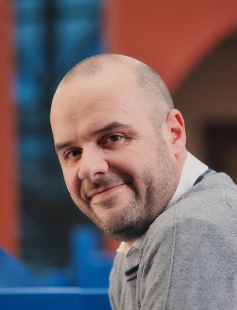
Evotec, Verona, Italy
matteo.daldosso@evotec.com
Matteo has a strong background in the solid state characterization of pharmaceutical and inorganic materials with expert understanding of the implications connected to the process of solid state profile determination in the pharmaceutical industry. His major responsibilities focus on crystalline structure elucidation, API form/version selection, drug developability, x-rays diffraction and scattering, thermal analysis, spectroscopy, regulatory compliance and data integrity. His career started with working experiences in various European organisations (ESRF, ISIS at the RAL, University of Wroclaw, University of Verona) prior to joining GlaxoSmithKline as an Information scientist in 2006 at its Verona R&D site in Italy. He was eLNB (electronic laboratory notebook) product owner and System Support specialist before moving to the CMC area. In 2012 he became team coordinator, technical and project leader in the physical properties space (XRPD, TGA, DSC, Raman, FT-IR, Optical Microscopy, ESEM, Particle size, GVS, Solid State profile determination), in the solid state one (Polymorph and Salt Screening, Crystallization Development) and in drug developability aspects (preformulation and early formulation). In 2018 he took the full responsibility as a Manager of the Physical Properties & Preformulation Unit within the Analytical and Material Sciences Department at Evotec in Verona (Italy). He is currently covering the role of Material Science Scientific Leader, supporting Evotec in delivering outstanding scientific output for projects and customer satisfaction, playing a transversal role for ensuring continued matrix support to the company.
Synchrotron-XRPD as a complementary tool to advanced laboratory analytical techniques: the importance of being Earnest
Active Pharmaceutical Ingredients (API) shows the tendency to get order and crystallize as solids in different structures (forms). In general, such different polymorphs show different physicochemical characteristics and properties. Therefore, the selection of the API form for drug product (DP) development is more than critical because the API form itself has a great impact on the properties of the final DP: the form selection problem has ethic, therapeutics, commercial and economic implications. On the other hand, the selection, stabilization and development of amorphous (disordered) phases is becoming super important in bio-enhanced formulations where the crystallinity is (ironically) considered as sort of 'impurity'. Several historical and real industrial examples are presented to show how the X-Rays Powder Diffraction (XRPD) is an essential technique for the determination and quantification of crystalline materials coupled with orthogonal techniques. But in an increasing number of cases, the resolution and detection limit of the state-of-the-art equipment available for daily use in the labs are not any more sufficient. Being Earnest is a mindset required to recognize the need to open the standard industrial approach to techniques with higher resolution, in particular synchrotron XRPD.
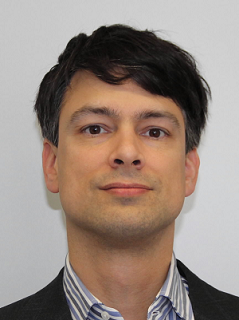
Novartis Pharma, Basel
birger.dittrich@novartis.com
Birger obtained his PhD in crystallography working with Prof. P. Luger at the Free University of Berlin. His research interests focus on experimental and theoretical charge densities ("quantum crystallography") applied to small molecules and macromolecules of pharmaceutical interest, and on crystal structure prediction. His group developed the cheminformatics invariom string notation for transferable electron density fragments used in crystal structure refinement. In 2007, after working as a postdoctoral researcher in Berlin and the University of Western Australia with Prof. M. Spackman, he moved to Goettingen working with Prof. G. Sheldrick and leading an Emmy Noether Junior research group where he also became Privatdozent. In 2012 he took up a teaching Professorship in Inorganic Chemistry at the University of Hamburg and moved in 2015 to the Heinrich-Heine University in Duesseldorf. Since 2018 Birger works at Novartis Pharma in Basel.
Electron diffraction & molecule-in-cluster computations for elucidating crystal structures of microcrystalline material
Molecule-in-cluster computations (10.1039/d0ce00488j) will be presented in the "advancements in pharmaceutical analysis through analytical techniques and theoretical predictions" session. MIC computations are a versatile tool. They permit structure validation through convergence of energy minimization. At the same time, using structure-specific restraints obtained from MIC computations in least-squares or Rietveld refinement augments the quality of bond distances and angles for starting structures of low accuracy as obtained by solving structures from electron diffraction refined with the kinematical scattering model, or from powder diffraction. Still, results from restrained refinements are generally considered an experimental result, as proven by the fit to single crystal Bragg-data or powder diffractograms. When the semi-empirical GFN2-XTB level of theory is used in MIC computations, results are fast to obtain also for structures with larger asymmetric unit content, e.g. higher Z' structures or oligopeptides. A major speedup compared to full-periodic computations is therefore achieved, increasing applicability and facilitating existing use-cases. Case studies from the literature will be presented. Application of the approach is streamlined using the baerlauch software.
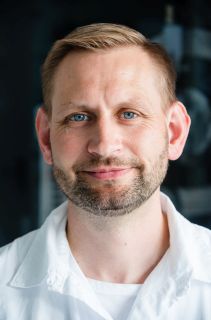
Zentiva, k.s.
Ondrej.Dammer@zentiva.com
For more than 15 years, I have been working in pharmaceutical development at Zentiva, Czech Republic. Between 2009 and 2015, I worked as a solid state analyst, and later as principal scientist in the Preformulation and Biopharmacy department. I focus on the solid state characterization of active pharmaceutical ingredients and drug products, the selection of solid form of active substance, its physical stability and the description of solid form conversion by a wide range of solid state techniques. I am co-author of more than 150 patents, 20 scientific publications and co-supervisor of several Ph.D. students at the University of Chemistry and Technology in Prague. I am one of the leaders of the Pharmaceutical Applied Research Centre (The Parc), a pharmaceutical research platform offering a post-graduate program that is based on collaboration between academic and industrial partners.
Advancing Drug Product Development: Synchrotron-Enabled Solid-State Characterization
Drug product development of innovative medicine brings new challenges for solid-state characterization of pharmaceutics. Analytical techniques commonly available in pharmaceutical companies usually need to be combined with sophisticated techniques which are outsourced. Deep understanding of developed drug product based on correlation of solid-state parameters with in-vitro performance then increases the success rate in bioequivalence (BE) study. Synchrotron X-Ray powder diffraction (s-XRPD) has become available to industry and opened up new possibilities to characterize pharmaceutics due to extraordinary properties of synchrotron radiation. Early detection of undesired crystal seeds of active substance formed during the formulation process and/or stability treatment enables to adjust the composition or formulation process and, at the same time, to accelerate the process of drug product development. Two case studies from the development of drug products in which s-XRPD was used will be presented. In the first study, s-XRPD enabled to set the storage conditions and packaging material for a drug product to prevent crystallization of two components into a cocrystal of active substance. Low detection limit of s-XRPD was achieved for the detection of different solid form. In the second study, s-XRPD was included into the broad scope of solid state investigation of drug product during root cause analysis after unsuccessful BE study. s-XRPD revealed different quality of used solid solution intermediates. They showed to be inhomogeneous in their crystallinity. Since even a small content of crystalline active substance could have an impact on BE performance the product was reformulated.

EPFL
lyndon.emsley@epfl.ch
Lyndon Emsley is a professor of chemistry at EPFL, where he is developing methods for atomic-level structure determination from powders using NMR spectroscopy.
Molecular structures from solid-state NMR, from crystalline to disordered systems
Structure elucidation of amorphous materials and microcrystalline solids is one of the key challenges in chemistry today. While techniques such as single crystal diffraction and cryo-electron microscopy are generally not able to characterize such materials, we will show how an approach based on measured NMR chemical shifts in combination with methods for large scale computation of shifts can rapidly determine full three-dimensional structures from powders. For example, using a machine learning model of chemical shifts, we will demonstrate the complete atomic-level structures of the amorphous forms of drug molecules by combining dynamic nuclear polarization-enhanced solid-state NMR experiments with chemical shifts predicted using machine learning for MD simulations of large systems. From these amorphous structures we then identify H-bonding motifs preferred conformations, and relate them to local intermolecular interaction energies.
F. Hoffmann-La Roche (Roche)
cinzia.gazziola@roche.com
Cinzia Gazziola is Regulatory Program Director at F. Hoffmann-La Roche (Roche) since 2013. She is currently accountable for the global CMC regulatory strategies for early and late-stage development small molecule products with particular focus on oligonucleotides and peptides. During the first years Roche, she covered leading roles on core commercial biologics. Before joining Roche, she led various regulatory activities covering quality, non-clinical and clinical on generics and biosimilars at Synthon BV, The Netherlands. She received her master's degree in biology and her Ph.D. in Evolutionary Biology from the University of Padova, Italy. She spent about 10 years working as a researcher at various Universities. As former member of the European Pharmaceutical Oligonucleotide Consortium (EPOC) she co-authored 2 articles on API in solution. She joined the IQ Consortium Co-processed API Working Group in 2021.
Regulatory challenges of co-processed API
Regulatory agencies recognize the potential benefits of innovations at the drug substance?drug product interface, such as co-processed API technologies. These approaches aim to enhance the physicochemical properties and manufacturability of active pharmaceutical ingredients (APIs) while providing a more efficient and flexible supply to patients. However, the current regulatory landscape poses challenges for companies intending to implement co-processed API technologies in product development. A significant hurdle lies in the designation of co-processed APIs as drug substances or drug product intermediates. For instance, Zelboraf, a globally approved product for treating BRAF V600 mutation-positive unresectable or metastatic melanoma, faced challenges due to its poor bioavailability in crystalline form. To address this, a micro-precipitated bulk powder (MBP) was developed and used in clinical studies. While the MBP was designated as the drug substance in the EU and most countries, the non-crystalline form was considered the API in the US, Canada, and Japan, with the MBP designated as a drug product intermediate. This divergence in designations across territories has introduced complexities in terms of GMP compliance and regulatory submissions content. To address these complexities, the industry seeks clarification on the definition of co-processed API, GMP requirements, and stability criteria. By providing clearer guidance and addressing these concerns, regulators can facilitate the implementation of co-processed API technologies, fostering innovation in drug development. This would ultimately support the timely and safe delivery of effective medications to patients.
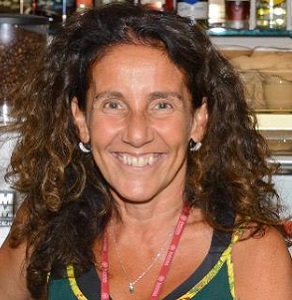
Institute of Crystallography - National Research Council
cinzia.giannini@cnr.it
From the PhD till 2000 she was researcher at the CNRSM in Brindisi. She joined CNR - Institute of Crystallography in 2001 as researcher (2001-2010), passed to senior researcher (2010-2020) and director of research (2020-today). From July 1st, 2021, she is Director of Institute of Crystallography. In the over 30 years of research activity, she has studied the structure and morphology of a variety of different materials working with X-ray scattering/diffraction techniques combined with advanced methodologies of data analysis, based on a good balance among X-ray Physics, Crystallography, Statistics, and Imaging algorithms. Precisely, till 2001 most of her work has been on thin films, surfaces, interfaces, lamellar heterostructures and superlattices, realized with physical methods for applications in photonics and electronics. From 2001, till now, her studies have dealt with nanomaterials, biomaterials, fibers, and tissues, mainly synthesized by chemical methods for applications in energy, nanomedicine, circular economy. The maturity reached in the field, and the numerous collaborations derived from it, have made her an internationally acknowledged expert in X-ray analysis of materials. She has disseminated her research findings with more than 335 full papers published in international journals presented in many national/international congresses and schools. The outcome of one research has been patented in 2023. A list of publications, from 2021, can be recovered from https://www.ic.cnr.it/staff/giannini-cinzia/, Bibliometric numbers: Scopus- H-index 50, citations 10,433; Google Scholar: H-index 54, citations 12870.
Small Angle Scattering technique applied to Pharmaceuticals
Small Angle X-ray Scattering (SAXS) combined with Wide X-ray Angle scattering techniques (WAXS) can provide a complete picture of material's structure from supra-molecular (SAXS) to sub-molecular scale (WAXS) [1]. High brilliance X-ray microprobes and nanoprobes are today available with laboratory equipment [2] or at synchrotron radiation facilities [3] which make these techniques very efficient for an advanced structural characterization of novel materials. Selected studies in pharmaceutics [5] will be discussed. [1] Watching nanomaterials with X-Ray eyes: probing different length scales by combining scattering with spectroscopy, C. Giannini, V. Holy , L. De Caro, L. Mino & C. Lamberti, PROG. MAT. SC. 112 ? 100667 (2020) [2] X-ray MicroImaging Laboratory (XMI-LAB), D. Altamura, R. Lassandro, L. De Caro, D. Siliqi, M. Ladisa & C. Giannini, J. APPL. CRYST 45, 869?873 (2012) [3] Materials characterization by synchrotron x-ray microprobes and nanoprobes, L. Mino, E. Borfecchia, J. A. Segura-Ruiz, C. Giannini, G. Martinez-Criado, & C. Lamberti, REV. MOD. PHYS. 90, 025007 (2018) [4] Small Angle X-ray Scattering data analysis and theoretical modelling for the size and shape characterization of drug delivery systems based on Vitamin E TPGS micelles, L. De Caro, A. Del Giudice, M. Morin, M. Reinle-Schmitt, A. Grandeury, F. Gozzo, C. Giannini, J. PHARM. SCI. 112, 243?249 (2023)
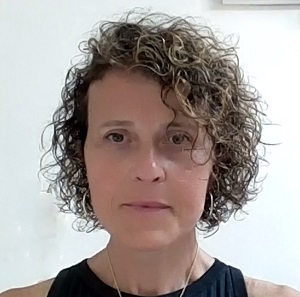
EXCELSUS STRUCTURAL SOLUTIONS (SWISS) AG
fabia.gozzo@excelsus2s.com
Fabia Gozzo has more than 30 years of practical experience with synchrotron facilities specializing in the development of complex instrumentation and its applications in the study of pharmaceuticals, pigments, food components, concrete and semiconductors. At the Advanced Light Source synchrotron facility within the Lawrence Berkeley National Labs, as an Intel Corporation scientist, Fabia played a pivotal role in the construction, commissioning and advancement of the first photoemission spectromicroscope exclusively dedicated to industrial investigations of new-generation microcircuits. At the Paul Scherrer Institute, as beamline scientist, she significantly contributed to the construction, commissioning and growth of the Swiss Light Source synchrotron facility where she has developed for more than 10 years a state-of-the-art powder diffractometer, acknowledged in several scientific publications as one of the best ones in the world. In 2012, she has founded Excelsus Structural Solutions, a spin-off company of the PSI that offers analytical services based on synchrotron radiation to the pharma and chemical industry. Since 2016, Excelsus integrated the Switzerland Innovation Network and since 2022 it is a WECONNECT INTERNATIONAL WomenOwned Certified Company. Recognized as a synchrotron and powder diffraction expert, Fabia is regularly invited internationally as a speaker, lecturer, and scientific advisor. She has authored and co-authored over 90 scientific articles and book chapters, contributing significantly to the advancement of knowledge in her field.
Synchrotron X-Ray Powder Diffraction
An overview of synchrotron radiation, X-Ray Powder Diffraction (XRPD) and synchrotron XRPD will be given that allows participants to get the necessary background to enjoy the workshop. Particular emphasis is given to the application of the technique to the structural and microstructural properties of pharmaceuticals. An overview of the latest advances in Level of Detection and Level of Quantification will also be discussed.
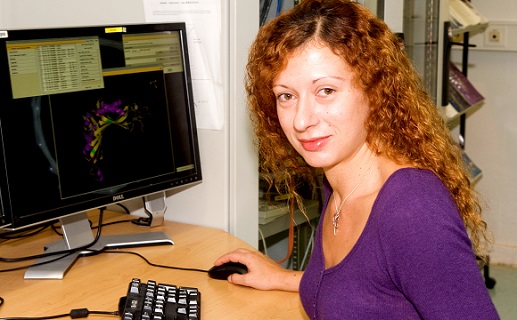
Department of Biology, University of Patras, Patras, Greece
imargiola@upatras.gr
Irene Margiolaki is currently employed as a Professor in the field of "Biochemistry: Structure and Function of Proteins" at the Department of Biology of the University of Patras (UPAT, Patras, Greece). She graduated in Physics in 1999 (University of Crete, Greece). Her D.Phil. thesis on "Structural, Magnetic and Dynamic properties of fullerene- based materials" was completed in 2004 at the Department of Physics, Chemistry and Environmental Sciences, of the University of Sussex, UK. During the period, 2003-2010, she has been employed as an instrument scientis, by the European Synchrotron Radiation Facility (ESRF), in Grenoble, France. An important part of her research at the ID22 High resolution powder diffraction beamline of the ESRF and ongoing research activities is the development of innovative powder diffraction methods for the structural characterisation of biological macromolecules, when data-quality single crystals for X-ray crystallography cannot be obtained. In addition, she focuses on the combination of XRPD with synchrotron serial crystallography for the elucidation of peptide and protein structures associated with pharmaceutical importance from microcrystals. Since 2010, she leads her 15 member research team at UPAT. In 2013 she inaugurated an X-ray crystallography laboratory at the Department of Biology equipped with 2 modern diffractometers for single crystal and powder diffraction measurements. In 2015, she created a station for protein expression, purification and crystallisation at the same department. Her work to date has been recognised by internationally distinguished organisations as Unesco - L'Oreal, ESRF, EPDIC, BCA etc.
Peptide and Protein Powders: Harnessing the Power of Synchrotron/Laboratory-XRPD and Advanced Methodologies
Knowledge of 3D structures of biological molecules plays a major role in both understanding important processes of life and developing pharmaceuticals. Intense X-rays available at powerful synchrotron beamlines provide macromolecular crystallographers with an incomparable tool for investigating biological phenomena on an atomic scale. The resulting insights into the mechanism's underlying biological processes have played an essential role and shaped biomedical sciences during the last 30 years, considered the "golden age" of structural biology. In addition to several methods available for structure determination, macromolecular X-ray Powder diffraction (XRPD) [1-2] has transformed over the past decades from an impossible dream to a respectable method. XRPD can be employed in biosciences for various purposes such as observing phase transitions [3-4], characterizing bulk pharmaceuticals [5], accurate structure determination [6] and detecting ligands in protein ligand complexes (7). This presentation aims to provide selected case studies demonstrating the power of the state-of-the-art infrastructures available at the ESRF which include: - The ongoing investigation of the molecular and crystal polymorphism of microcrystalline protein drugs against diabetes aiming in the improvement of diabetes drugs arising from both the development of microcrystalline pharmaceuticals, as well as the combination of human insulin (HI) with organic ligands with well-known pharmaceutical action. - Studies of the structure and dynamics of proteins of newly emerging, high-risk RNA viruses for antiviral drug design, and the exploration of the crystallographic fragment-screening as a method for drug discovery against viral proteins. The aim is to provide important information on specific virus proteins involved in several structural RNA viruses-related projects and establish pandemic preparedness (linking to the EVA & VIZIER EU Projects). - The development and combination of methodologies for improving currently existing peptide-based drugs. The aim is to provide significant information for the enhancement of a drugs absorption, distribution, metabolism and excretion (ADME) characteristics; a route which requires extensive peptide/ protein polymorph screening. 1. Margiolaki I., "Macromolecular Powder Diffraction", Book Chapter for the International Tables of Crystallography- Volume H: Powder Diffraction, chapter 7.1, 718-736, (2019). 2. Karavassili F. & Margiolaki I., Protein & Peptide Letters, 23, 3, 232 (2016); ESRF Industrial case studies. 3. Spiliopoulou M. et al., J. Appl. Cryst. 54, 963-975 (2021). 4. Fili S. et al., IUCrJ. 4, 2, 534 (2015); Triandafillidis D. P. et al., Acta Cryst. D76, 1065-1079 (2020). 5. Karavassili F. et al., Biomolecules 7, 3, 63 (2017). 6. Margiolaki I. et al., J. Am. Chem. Soc. 129, 11865 (2007); Triandafillidis D. P. et al., Acta Cryst. D. 79, 374-386 (2023) & Cover article; Spiliopoulou M. et al., Acta Cryst. A77, 186-195 (2021) & Cover article. 7. ESRF News March 2015; Karavassili F. et al., Acta Cryst. D76, 4, 375-384 (2020).
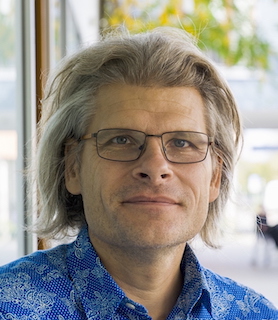
Avant-garde Materials Simulation Deutschland GmbH
marcus.neumann@avmatsim.eu
Dr. Marcus A. Neumann has a M.Sc. in Physics from the Heinrich-Heine University in Duesseldorf, Germany, and holds a Ph.D. in Physics from the University of Grenoble, France. During his Ph.D. at the Institute Laue-Langevin, Dr Neumann investigated proton quantum dynamics in molecular solids by neutron scattering and developed software for the numerical solution of the nuclear Schroedinger equation. He joined Materials Simulation Ltd. in Cambridge, UK, as product specialist for crystallisation and analytical simulation in 1999 and was promoted to product manager in 2001. At Materials Simulation then become Accelrys, Dr. Neumann invented the X-Cell algorithm for powder indexing. In 2002 Dr. Neumann founded Avant-garde Materials Simulation SARL, a French company specializing in the development of novel methodology for Crystal Structure Prediction (CSP) and opened a fully owned subsidiary, Avant-Garde Materials Simulation Deutschland GmbH, in Freiburg, Germany, in December 2007. Dr. Neumann has pioneered modern CSP and turned it into a standard technique used by a large number of pharmaceutical companies world-wide. He still is the CEO of Avant-garde Materials Simulation today.
Crystal Structure Predictions you can TRHu(ST)
The ability of many chemical compounds to form more than one crystal form is termed crystal polymorphism. Important crystal forms may be discovered late in the product development cycle, resulting in lost opportunities or, much worse, the dreaded phenomenon of disappearing polymorphs. In fact, it may happen that a previously exploited crystal form becomes hard or impossible to obtain after the late appearance of a thermodynamically more stable form. One of the goals of modern organic crystal structure prediction has always been to identify missing crystal forms still waiting to be discovered. However, insufficient and poorly characterized energy accuracy as well as the inability to compare crystal structures of different stoichiometry such as hydrates and anhydrates substantially limited the applicability of the approach so far. The TRHu(ST) method for the calculation of lattice free energy as a function of Temperature and Relative Humidity with STandard deviations is a game changer that overcomes these limitations. TRHu(ST) 23 achieves high accuracy by combining dispersion-inclusive density functional theory and vibrational contributions to the free energy with an additional single-molecule energy correction. The affordability of the method has been improved by blending force field and ab initio calculations to reduce the CPU time requirements of phonon calculations. Statistical errors for computed free energies have been carefully evaluated against a large experimental benchmark. The predictive power and graphical representation of the method are illustrated by combined experimental and computational case studies for two pharmaceutical compounds, radiprodil and upadacitinip.
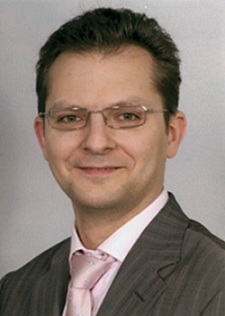
University of Basel
maxim.puchkov@unibas.ch
PD Dr. Maxim Puchkov Department of Pharmaceutical Sciences, University of Basel Co-Founder and CTO of Galvita AG, CEO and President of the board of Aphestec AG As a Chemical Process Engineer with a focus on pharmaceutical technology, process design, and industrial pharmacy, I specialize in the intersection of computer-aided design (CAD), material science, and simulation for pharmaceutical formulations. My material science expertise is centered on developing innovative smart materials for oral drug delivery systems alongside novel manufacturing and analytical techniques. I have successfully set up research laboratories for drug delivery studies and supported the development of pharmaceutical production facilities on a small scale. Furthermore, my entrepreneurial ventures include co-founding startups that have introduced products such as F-CAD, a software tool for pharmaceutical design and simulation, and Galvita TIP, a novel excipient and oral drug delivery platform.
Tools for designing an
The concept of simulated pharmaceutical product attributes, specifically the dissolution profile and mechanical properties of solid dosage form, are paramount for designing modern pharmaceutical products and setting up the ground of personalized medicine. The recent introduction of AI tools to facilitate the design of NMEs and biosimilars presents a great challenge for drug delivery platforms such as age-appropriate formulations, geriatric, and patients with disabilities. The pinnacle of complexity is the concept of personalized manufacturing of oral drugs, not to forget the relatively popular concept of a polypill. Due to the stochastic nature of processes in a multiparticulate system, such as a pharmaceutical tablet, establishing a "pre-programmed" release profile by arranging the individual components in a pattern is a cryptographic challenge. Understanding the dynamics of individual components upon contact with body fluids on the micro level is key to deciphering the latter. In this context, we show how the individual models can be extracted from the time-resolved microtomographic acquisitions, including swelling of components, dynamics of dissolution and disintegration, compression of particles, and influence of their locations on the actual physicochemical properties of the tablets. We show how this information can be embedded into the HPC model and how the simulation experiments can further elucidate critical material attributes in a pharmaceutical formulation.

Bristows
jonathan.ross@bristows.com
Jonathan specialises on patent disputes in the biotechnology, pharmaceutical and renewable energy sectors. In the pharmaceutical sector he has experience advising on compound, formulation, and polymorph patents. He has advised on matters before the English courts and with the coordination of litigation in other jurisdictions. Jonathan holds a PhD in organic chemistry and protein structure.
Obtaining and enforcing polymorph and amorphous form patents (Part 3)
This talk will consider (i) the type of data that should be included in patent applications; (ii) common issues encountered in prosecution of such patents; and (iii) considerations in the enforcement of such patents, including claim interpretation, obtaining samples for testing, the role of synchrotron XRPD in litigation experiments, de minimis infringement, and product that undergoes conversion.
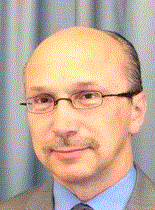
Novartis Pharma AG
peter_r.roth@novartis.com
Dr. Peter Roth is a European and Swiss Patent Attorney. He is a chemist by training with limited hands-on experience in XRPD analytics, but in-depth experience in patent litigation. After obtaining his Ph.D. from the University of Wuppertal and a Master of Law from the Humboldt University at Berlin, he first delved into the world of patents at Akzo Nobel and in private practice. Since more than 25 years, Peter is working in-house at Novartis Pharma. Peter dealt with patent litigation for about ten years and held the position of Head of Patent Litigation ex-US, Oncology, at Novartis for five years. Patent conflicts handled by Peter and his team included disputes in relation to Glivec and Tasigna, both having patents claiming solid forms of the API, such as hydrates, salts, and polymorphs, in jurisdictions like Argentina, Chile, China, Colombia, India, Malaysia, and Slovakia, and before the European Patent Office.
Lessons learned from litigating solid form patents
In the Pharma industry, key assets of every company are covered by IP rights and the latter sometimes even represent a major part of a company's total value. Patents covering solid forms are no exemption to that. Like any other patent, solid form patents can be subject to litigation, including validity challenges in opposition and revocation proceedings. The robustness of solid form patents in this environment depends heavily on the data available at the time of filing or, in most jurisdictions, at a later stage. Based on recent experience, the presentation will deal with typical pitfalls for patents on solid forms one should know and what can be done to minimize the risk in patent litigation. In addition, the philosophy behind the 'Novartis Enforcement Principles' will be explained. These principles define what type of patents shall be obtained and enforced by Novartis.
.jpg)
Novartis AG
evgenia.rousaki@novartis.com
Evgenia Rousaki (MSc.) is a Formulation Project Leader in Pharmaceutical Development, Novartis, Basel, Switzerland. She followed university studies in Pharmacy at the University of Thessaloniki, Greece. She spent 3 years as a Scientist in Formulation Development and 14 years as a senior scientist at the Materials Science group of Novartis, Basel. In 2016 she obtained the diploma (DAS) of the European Centre of Pharmaceutical Medicine (ECPM) from the university of Basel. Evgenia is also a co-inventor of Asciminib HCl crystalline forms (patent WO2020/230099, Scemblix).
When the unaddressed answers come from Synchrotron XRPD: A case study according to text book!
The aim of this study is to highlight the complementary nature of synchrotron-based techniques in comparison to state-of-the-art laboratory equipment, specifically X-ray powder diffractometers. Currently, limitations have been identified in the peak-to-peak resolution between different phases, impacting the evaluation of the purity of active pharmaceutical ingredients (APIs) as a quality attribute. Furthermore, the evaluation of phase purity in the drug product is hindered by a lack of specificity and low strength, which significantly affects sensitivity and the limit of detection. This case serves as a textbook example of how synchrotron techniques can address these challenges by leveraging improved brightness and an optimum choice of wavelength. The use of synchrotron-based approaches can effectively enhance selectivity, peak-to-peak resolution, and sensitivity. By utilizing synchrotron methods, researchers can overcome the limitations of traditional laboratory equipment and achieve more accurate and reliable results. This study demonstrates the significance of synchrotron-based approaches in pharmaceutical analysis, specifically in evaluating the purity of APIs and drug products. The unique capabilities of synchrotron techniques offer valuable insights into the characterization of pharmaceutical materials, ultimately contributing to the development of high-quality drugs and ensuring patient safety.
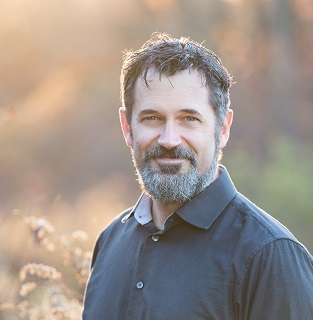
Merck & Co., In. New Jersey, USA
luke_schenck@merck.com
Luke Schenck started in Pharmaceutical Development at Merck & Co., Inc. in 2001, gaining scale up expertise with conventional granulation and compression processing routes. He later became involved in Merck's initial hot melt extrusion (HME) development efforts including scale up to achieve Merck's first PhIII HME delivery. In 2008, he moved to Chemical Engineering R&D. Here he worked on the validation and NDA submissions for the enzymatic transamination commercial route for Januvia and Belsomra, Merck's first HME compound. The primary motivation for the move to drug substance was to explore opportunities at the drug product interface. This initially involved working to identify HME routes to devolatilize API solvates, and additive mediated crystallization efforts as a means to alter morphology, particle size and form. Starting in 2015, Luke led the Particle Engineering Lab, identifying routes to manage challenging API properties. The group's focus included 'bottom up' generation of nano to micron sized neat API for oral, parenteral, and respiratory delivery routes as well as innovative approaches to deliver co-processed API to address needs of increasingly challenging APIs in development. Since 2023, Luke has been in Oral Formulation Sciences.
Unlocking the Future: Innovations and Impact of Co-Processed Active Pharmaceutical Ingredients in Pharmaceutical Science and Industry
Two opposing and important constraints evolving in pharmaceutical development include increased molecular complexity of new molecules designed to meet therapeutic targets, and regulatory calls for manufacturing innovation to deliver on, 1) enhanced manufacturing robustness towards improved assurance of supply, and 2) reduced cost towards improved patient access. Co-processed API involves the introduction of non-active components (excipients) during drug substance processing and represents a departure from precedent where drug substance and drug product operations are distinct and separated. Case studies will be presented on how the co-processed API route offers new options to address increased molecular complexity of development targets. Proof of concept studies will be presented showcasing control of physical properties, phase, and stability to allow streamlined drug product processing with expanded applicability of continuous direct compression. Additionally, the presentation will outline opportunities to deliver on sustainability targets and address potent compound processing constraints. More effective deployment of co-processed API technologies across commercial manufacturing will require a thoughtful and strategic collaboration among academia, industry, and regulatory agencies. Outlining the opportunities for co-processed API is an exciting topic to discuss at the SPS-XRPD workshop to highlight how leading-edge characterization technologies can be applied to better understand structural properties and quality attributes to help drive innovative manufacturing technologies.

Non-diffraction-based complementary analytical techniques
pam.smith@improvedpharma.com
Pam Smith has 25 years of experience with pharmaceutical research and development, focused on solid-state chemistry. She originally joined SSCI as an expert in microspectroscopy and expanded her skillset to include IR, Raman and XRPD method development. During her tenure at SSCI, she became an ISSSP certified LSS Black Belt and ultimately assumed operational appointments including the General Manager of SSCI and the Vice President of Global Analytical Services for AMRI, the parent company of SSCI. In 2018, she joined Improved Pharma, a research, consulting, and information company dedicated to improving pharmaceutical methods, formulations, and processes. Her initial research focus was the application of synchrotron XRPD and PDF on the study of amorphous dispersions. Much of her work also involves using synchrotron XRPD and Raman microscopy mapping for patent support. Most recently, her research focus has been on crystallization experiments in microgravity. In 2022 she became part owner of the company, which was founded by Steve and Sarah (Sally) Byrn. Pam has almost 100 publications, presentations, and patents, and has received numerous awards over the years; the most notable of which was a recognition from the White House as a Changemaker in the Inaugural United State of Women Summit in Washington DC. The summit celebrated extraordinary women who are creating change and growth in our world- women who are doing great things.
Non-diffraction-based complementary analytical techniques
XRPD is considered to be the gold standard for differentiating polymorphs from one another, but a number of other analytical techniques are equally as valuable. Thermal methods such as DSC provide information on the enthalpy change of various solid-state processes. Thermal microscopy provides further details such as phase transformations, change in crystallinity, desolvation events, and decomposition. For hydrates and solvates, TG is another useful thermal technique for characterization. Spectroscopic methods such as IR, Raman, and solid-state NMR also can also differentiate one polymorph from another. IR is especially good at detecting changes in H-bonding (hydrates and solvates) and salt formation. Spectroscopic methods can also confirm that the chemical identify of the material hasn't changed. DVS, which provides a measure of hygroscopicity, is another useful characterization tool. Together, these techniques provide a full picture of the different polymorphs of a given molecule and how they are related to each other.
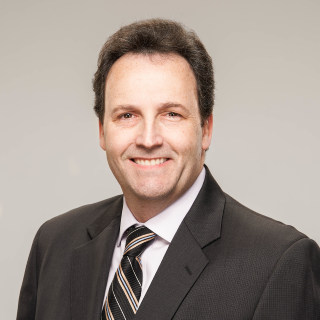
Finnegan, Henderson, Farabow, Garrett & Dunner, LLP
m.david.weingarten@finnegan.com
David Weingarten, Ph.D. is a Partner in Finnegan's Atlanta, Georgia office. David has a diverse chemistry and life science practice focusing on complex chemical, pharmaceutical, and biotechnology patent litigation before U.S. district courts and the U.S. International Trade Commission (ITC) and on post-grant proceedings before the Patent Trial and Appeal Board (PTAB) of the USPTO. David also has extensive experience preparing and prosecuting U.S. patent applications, coordinating and managing foreign prosecution, developing strategies for portfolio management and planning, and participating in diligence projects on behalf of domestic and foreign clients. David has been honored by LMG Life Sciences for his contributions to the fields of 'Patent Prosecution' and 'Patent Strategy & Management' and in Intellectual Asset Management Patent 1000 for his 'litigation expertise'. He has also been recognized on Best Lawyers: Ones to Watch list. David is a Fellow of the American Bar Foundation and Chair of the Food and Drug Law Committee of the American Intellectual Property Law Association (AIPLA). Prior to practicing law, David spent more than a decade in the pharmaceutical industry developing drugs across a wide range of therapeutic areas, including cardiovascular, metabolic, respiratory, and inflammation. As a member of senior management, he was responsible for leading research and development efforts in drug discovery, process research and development, and manufacturing. He also prepared New Drug Application (NDA) submissions, conducted due diligence, and managed technology transfers.
Patent litigation of polymorphs: US and EP perspectives
General principles of patent law particularly relevant to claims to polymorphs in each of the United States and Europe will be reviewed, followed by a focused discussion of the current treatment of such claims by courts and IP offices in each of the United States and Europe. Scientific concepts and technical information deemed useful under current patent laws for showing patentability and validity of claims to polymorphs will be reviewed. Case studies and examples based on publicly available patents and documents from litigations will be used throughout to highlight issues, considerations, and potential strategies and pitfalls under current patent laws for protecting polymorphs.
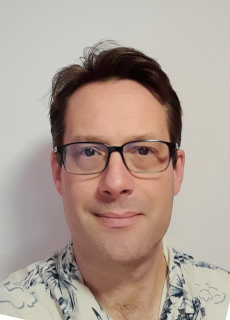
STFC Rutherford Appleton Laboratory
tristan.youngs@stfc.ac.uk
Tristan Youngs is an instrument scientist on the Near and InterMediate Range Order Diffractometer in the Disordered Materials Group at the ISIS Neutron and Muon Source at STFC Rutherford Appleton Laboratory, Harwell Campus, UK. He obtained his PhD in Computational Chemistry at the University of Reading, UK, in 2004, following which he moved to the School of Maths and Physics at Queen's University Belfast to work in the flourishing area of ionic liquids, focussing on the simulation and investigation of their bulk structure. There he forged an interest in the power of neutron scattering applied the solution of liquid structure, and went on to join the Disordered Materials Group at ISIS in 2012. His scientific interests remain rooted in the study of local structure within liquids and confined liquids with a specific focus on liquid phase heterogeneous catalysis and associated integration of secondary probes to neutron beamlines (e.g. NMR), and the development of new techniques and software for the analysis of total scattering data. He has more than 20 years expertise in the development of scientific software in various languages and is the principal developer and project manager for the Dissolve software (https://github.com/disorderedmaterials/dissolve).
Dissolve: Beyond EPSR
Dissolve is a simulation tool for the analysis and interrogation of total scattering data taken on disordered systems, and follows on from the techniques introduced by Empirical Potential Structure Refinement (EPSR) by A. K. Soper. The EPSR methodology has been successfully applied to the study of a wide range of materials from liquids and their mixtures to confined condensed phases within amorphous or crystalline frameworks. However, the increasing drive towards scattering experiments focussing on applied systems encompassing correlations on multiple length scales has significantly shifted the demands made on, as well as the focus of, simulation-based analysis. Here I will offer an overview of the capabilities offered by Dissolve over EPSR, discussing the overlap between the two packages and the critical differences. From there several use cases focussing on complex or highly heterogeneous systems will be presented and the benefits of Dissolve explained. Potential applications of the methodology for questions relevant to the pharmaceutical industry will be discussed, with the opportunities and limitations of the overall technique highlighted.

